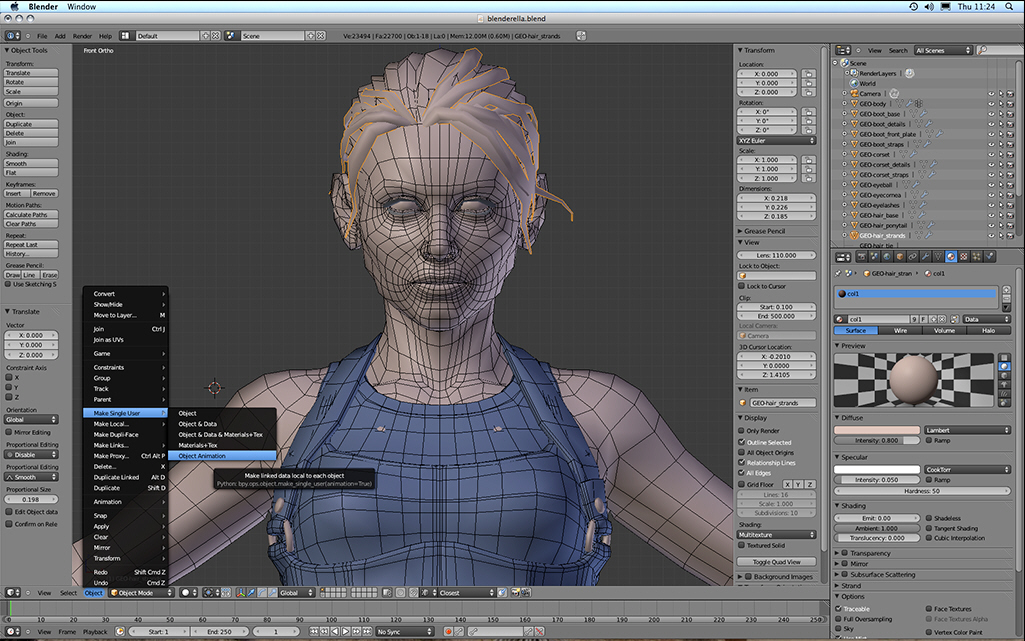Blender debuts new features, improved performance and better UI

Non-profit organization The Blender Foundation has released Blender 2.70, a major new release of its cross-platform, open-source 3D graphics tool. Version 2.70, also available in 64-bit and portableform on Windows, adds new features and begins a revamp of its user interface.
There’s initial support for volumetrics in Cycles, plus faster rendering of hair and textures. Also improved are the Motion Tracker, mesh modelling and game engine tools.
Version 2.70 sees Cycles gain initial support for volume rendering, including emission, absorption and scattering, which will make rendering three-dimensional effects like fire, mist and glass absorption possible. At the same time, CPU rendering performance has been improved, particularly for hair, textures and the Open Shading Language.
The Motion Tracker tool gains support for weighted trackers, which should keep results more stable even when features disappear or become difficult to track. The plane track workflow has also been made easier to control and a new detector algorithm further stabilizes the automatic feature detection.
The revamped user interface now comes with a tabbed toolbar, allowing users to organize tools into categories, while support for editing multiple buttons at once has also been added. The Transform tools also gain a mode for entering expressions and units.
A new Laplacian Deform modifier has been added to the modelling tool, which poses a mesh while preserving geometric details. A new wireframe modifier also allows users to transform meshes into wireframe representations. Other improvements affect a number of modifiers as well as knife and bevel tools.
A major tweak to the Threaded Dependency Graph now allows for a number of features -- including object modifiers and constraints -- to be computed using multiple processes. This should significantly improve performance on multi-core processors, and future improvements are also mooted that will make the graph even more powerful.
Game developers will be pleased to learn the game engine now supports discrete level of details for meshes as well as allowing users to work with native Photoshop (PSD) files. Also added is a new view navigation walk mode that will appeal particularly to those developing first-person shooters.
Other changes include a reorganising of the Freestyle Python API, normalized display for FCurves and derivative map baking. Also updated are a number of add-ons, while over 560 bug-fixes have also been implemented.
Blender 2.70 is available now as a free, open-source download for Windows, Mac and Linux. Also available for Windows users are Blender 2.70 (64-bit) and Blender Portable -- the latter is likely to be updated to version 2.70 in the next few days.
